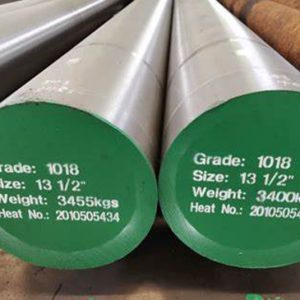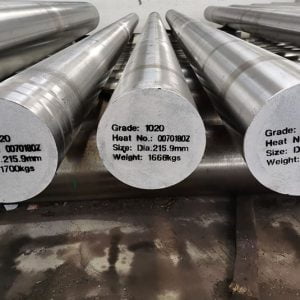Introduction
In the world of manufacturing, material selection plays a critical role in determining the quality, durability, and performance of the final product. Among the many materials available, 1045 steel stands out due to its exceptional properties, particularly its yield strength. Understanding the yield strength of 1045 steel is essential for engineers and manufacturers who aim to optimize their designs and ensure the reliability of their products. In this comprehensive guide, we will explore why 1045 steel yield strength matters in manufacturing, its benefits, and how it compares to other steel grades.
Understanding 1045 Steel Yield Strength

1045 steel, also known as medium-carbon steel, is widely used in manufacturing due to its balance of strength and ductility. Yield strength is a crucial mechanical property that defines the maximum stress a material can withstand without permanent deformation. For 1045 steel, the yield strength typically ranges between 530 MPa to 600 MPa (77,000 psi to 87,000 psi). This characteristic makes it suitable for a variety of applications where moderate strength and good machinability are required.
Importance of 1045 Steel Yield Strength in Manufacturing
The yield strength of 1045 steel is particularly important in manufacturing for several reasons:
- Durability and Reliability: Components made from 1045 steel can endure significant stress without deforming, ensuring long-term durability and reliability.
- Safety: High yield strength reduces the risk of material failure, which is crucial in applications where safety is paramount.
- Cost-Effectiveness: Using 1045 steel can reduce the need for frequent replacements and maintenance, leading to cost savings over time.
- Design Flexibility: The strength of 1045 steel allows for more design flexibility, enabling manufacturers to create complex and high-performance components.
Applications of 1045 Steel Yield Strength in Various Industries
The high yield strength of 1045 steel makes it suitable for a wide range of applications across various industries. Here are some key sectors where 1045 steel is commonly used:
- Automotive Industry: In the automotive sector, 1045 steel is used for making shafts, gears, and other critical components that require high strength and toughness.
- Construction: 1045 steel is employed in the construction of heavy machinery, structural components, and reinforcement bars.
- Machinery and Equipment: The manufacturing of industrial machinery, such as presses and hammers, often relies on 1045 steel for its excellent mechanical properties.
- Oil and Gas: In the oil and gas industry, 1045 steel is used for making drill bits, pipeline components, and other equipment that must withstand high stress and harsh conditions.
- Agricultural Equipment: The durability and strength of 1045 steel make it ideal for manufacturing agricultural tools and machinery.
Comparing 1045 Steel Yield Strength with Other Steel Grades
To better understand the significance of 1045 steel yield strength, it is helpful to compare it with other commonly used steel grades. The table below highlights the yield strength of various steel grades:
| Steel Grade | Yield Strength (MPa) | Yield Strength (psi) |
|---|---|---|
| 1045 Steel | 530 – 600 | 77,000 – 87,000 |
| 1018 Steel | 370 | 53,700 |
| 4140 Steel | 655 | 95,000 |
| 4340 Steel | 470 – 745 | 68,000 – 108,000 |
| A36 Steel | 250 | 36,300 |
From the table, it is evident that 1045 steel offers a higher yield strength compared to low-carbon steels like 1018 and structural steels like A36, while providing a balanced performance compared to alloy steels like 4140 and 4340.
Factors Affecting the Yield Strength of 1045 Steel
Several factors can influence the yield strength of 1045 steel, including:
- Heat Treatment: The heat treatment process, such as quenching and tempering, can significantly enhance the yield strength of 1045 steel.
- Chemical Composition: The presence of elements like carbon, manganese, and silicon affects the steel’s mechanical properties.
- Manufacturing Process: Processes such as forging, rolling, and machining can impact the yield strength of the final product.
- Microstructure: The steel’s microstructure, including grain size and phase distribution, plays a crucial role in determining its yield strength.
Enhancing 1045 Steel Yield Strength through Heat Treatment
Heat treatment is a widely used method to improve the mechanical properties of 1045 steel. Common heat treatment processes include:
- Annealing: This process involves heating the steel to a specific temperature and then slowly cooling it to remove internal stresses and improve ductility.
- Quenching: Quenching involves rapidly cooling the steel after heating it to a high temperature, resulting in increased hardness and strength.
- Tempering: Tempering is performed after quenching to reduce brittleness and achieve a balance between hardness and ductility.
Below is a table summarizing the effects of different heat treatment processes on 1045 steel yield strength:
| Heat Treatment Process | Yield Strength (MPa) | Yield Strength (psi) |
|---|---|---|
| As-Rolled | 530 – 600 | 77,000 – 87,000 |
| Annealed | 415 – 480 | 60,000 – 70,000 |
| Quenched and Tempered | 700 – 850 | 101,500 – 123,000 |
Advantages of Using 1045 Steel in Manufacturing
Utilizing 1045 steel in manufacturing offers several advantages, including:
- Cost-Effective: 1045 steel provides a good balance of cost and performance, making it an economical choice for many applications.
- Versatility: The ability to be heat-treated allows for customization of properties to meet specific requirements.
- Machinability: 1045 steel is relatively easy to machine, which reduces production time and costs.
- Availability: 1045 steel is readily available in various forms, such as bars, sheets, and plates, ensuring ease of procurement.
Challenges and Considerations in Using 1045 Steel

While 1045 steel offers numerous benefits, there are also some challenges and considerations to keep in mind:
- Brittleness: If not properly tempered, quenched 1045 steel can become brittle and prone to cracking.
- Corrosion Resistance: 1045 steel has limited corrosion resistance, which may require protective coatings or treatments in certain environments.
- Weldability: The medium carbon content can make welding more challenging, requiring preheating and post-weld heat treatment to prevent cracking.
Conclusion: 1045 Steel Yield Strength
The yield strength of 1045 steel is a critical factor that determines its suitability for various manufacturing applications. With its moderate strength, good machinability, and versatility, 1045 steel is an excellent choice for producing durable and reliable components. By understanding its properties, applications, and benefits, manufacturers can make informed decisions to optimize their processes and products. Whether used in automotive, construction, or industrial machinery, 1045 steel continues to be a valuable material in the manufacturing industry.
FAQ
Q: What is the primary use of 1045 steel in manufacturing?
1045 steel is primarily used for making machinery parts, automotive components, construction equipment, and other applications that require moderate strength and toughness.
Q: How does heat treatment affect the yield strength of 1045 steel?
Heat treatment processes like quenching and tempering can significantly enhance the yield strength of 1045 steel, making it more suitable for high-stress applications.
Q: Can 1045 steel be welded?
Yes, 1045 steel can be welded, but it requires careful control of welding parameters and pre- and post-weld heat treatments to avoid cracking and ensure strong weld joints.
Q: What are the common forms in which 1045 steel is available?
1045 steel is commonly available in forms such as bars, rods, sheets, and plates, making it versatile for various manufacturing processes.
Q: How does 1045 steel compare to other medium-carbon steels?
Compared to other medium-carbon steels, 1045 steel offers a good balance of strength, ductility, and machinability, making it a popular choice for many applications.





